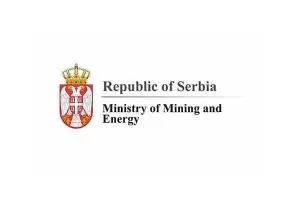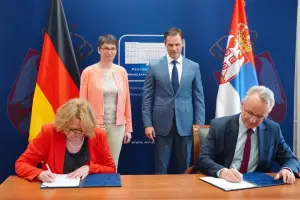- Serbia
Get to know Serbia
- Citizens
Culture and science
Health services
Pension and disability insurance
- Business
Employment
Economy
- Media
- Government
- Contact
Keep in touch
Contact form
Back
Keepin touch
Whether you have a question, comment, suggestion or any problem in the purview of the government, send us your message and we will try to respond as soon as possible. If your problem is not in our purview, we will forward your message to the relevant institution.
Q:
A:
National Corporation insures 1,300 housing loans in March
Belgrade,
5 April 2007
The National Housing Loan Corporation stated today that this March it insured 1,300 housing loans amounting to over €41 million, which is a record amount so far.
The statement adds that 330 loans were ensured through the government subsidy programme and they total €8.5 million, whereas the remaining ones are commercial housing loans without state subsidies.
In 2005 the amount stood at around €39 million, which is less than this March alone, notes the statement and recalls that since it began working, the National Corporation had a total portfolio of insured loans of over €330 million, out of which number €79 million were government-subsidised loans divided into 3,150 loans.
The average housing loan stood at around €30,000 with the monthly instalment of between €160 and €190 depending on the interest rate, while the average salary in Serbia exceeded €300, which is why housing loans have become more available.
The region of Vojvodina takes up the top position when it comes to ensured loans participating with over 40%, followed by Belgrade with 38%, Central Serbia with around 17% and Southeast Serbia with 5%.
The total portfolio of housing loans in Serbia’s GDP stood at little below 2%, which is considerably less than the average in Central and Eastern Europe where it stands at 15%.
Due to banks’ satisfactory offer of housing loans, the mortgage loan market is doing pretty well, though this does not reduce the problem of weak offer at the real estate market where the lack of quality flats is evident.
The main problem in Belgrade and other Serbian towns is unsatisfactory linkage between periphery and central business zones, reads the statements and adds that with infrastructure development the suburban zones will become more alluring.
In 2005 the amount stood at around €39 million, which is less than this March alone, notes the statement and recalls that since it began working, the National Corporation had a total portfolio of insured loans of over €330 million, out of which number €79 million were government-subsidised loans divided into 3,150 loans.
The average housing loan stood at around €30,000 with the monthly instalment of between €160 and €190 depending on the interest rate, while the average salary in Serbia exceeded €300, which is why housing loans have become more available.
The region of Vojvodina takes up the top position when it comes to ensured loans participating with over 40%, followed by Belgrade with 38%, Central Serbia with around 17% and Southeast Serbia with 5%.
The total portfolio of housing loans in Serbia’s GDP stood at little below 2%, which is considerably less than the average in Central and Eastern Europe where it stands at 15%.
Due to banks’ satisfactory offer of housing loans, the mortgage loan market is doing pretty well, though this does not reduce the problem of weak offer at the real estate market where the lack of quality flats is evident.
The main problem in Belgrade and other Serbian towns is unsatisfactory linkage between periphery and central business zones, reads the statements and adds that with infrastructure development the suburban zones will become more alluring.
-
 Belgrade, 21 July 2025
Belgrade, 21 July 2025Construction of oil pipeline with Hungary to begin early next year
-
 Belgrade/Athens, 17 July 2025
Belgrade/Athens, 17 July 2025Serbia continues to align with EU in field of energy
-
 Kostolac, 14 July 2025
Kostolac, 14 July 2025First solar power plant Petka in Kostolac put into trial operation
-
 Belgrade, 11 July 2025
Belgrade, 11 July 2025Potential for improving cooperation with Belarus in many areas
-
 Požega, 5 July 2025
Požega, 5 July 2025Section of Pakovraće - Požega highway officially opened
-
 Belgrade, 2 July 2025
Belgrade, 2 July 2025Technical specifications defined for Serbia-Hungary oil pipeline
-
 Belgrade, 30 June 2025
Belgrade, 30 June 2025IMF confirms Serbia successfully implementing all agreed reforms
-
 Belgrade, 27 June 2025
Belgrade, 27 June 2025Double Taxation Avoidance Agreement with Germany signed
-
 Kostolac, 25 June 2025
Kostolac, 25 June 2025Construction of Kostolac wind farm nearing completion
-
 Belgrade, 24 June 2025
Belgrade, 24 June 2025Government supports request for new postponement of sanctions against NIS
